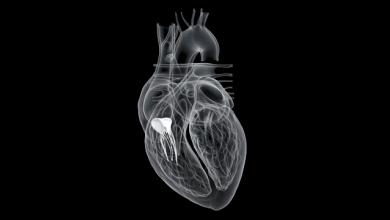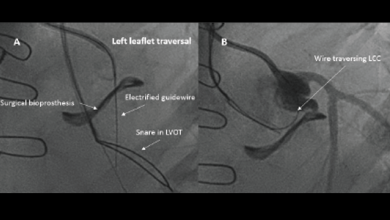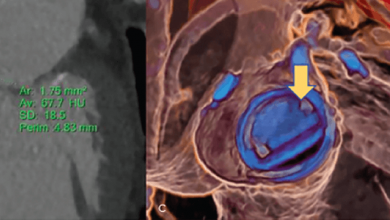Search results
Author(s):
Jean-Bernard Masson
,
Jessica Forcillo
Added:
2 years ago
Author(s):
Kusha Rahgozar
,
Sharon Bruoha
,
Edwin C Ho
,
et al
Added:
2 years ago
Author(s):
Trevor J Simard
,
Mackram F Eleid
Added:
2 years ago
Author(s):
Somsupha Kanjanauthai
,
Kabir Bhasin
,
Luigi Pirelli
,
et al
Added:
3 years ago
Transcatheter aortic valve replacement (TAVR) has been established as a therapeutic option for patients with severe symptomatic aortic stenosis who are considered to be of intermediate, high or prohibitive surgical risk.1–5 As a result of favorable TAVR outcomes and substantial improvements in transcatheter heart valve (THV) technologies and implantation techniques, the feasibility of broadening…
View more
BAV: SAVR versus TAVR
Author(s):
Arthur J Lee
,
Imran Baig
,
Katherine B Harrington
,
et al
Added:
1 year ago
Article
Author(s):
Jacob Green
,
Vasilis Babaliaros
,
Peter Block
Added:
3 years ago
Mitral regurgitation (MR) is the most prevalent form of valvular heart disease. Its major causes are primary mitral leaflet abnormalities (valve prolapse, healed endocarditis, or rheumatic disease), primary myocardial disease (functional MR), and ischemic disease. Even with severe MR, affected individuals may remain asymptomatic for long periods of time.1 The early, compensated state of MR is…
View more
Valve-in-valve TAVR
Author(s):
Emily Perdoncin
,
Gaetano Paone
,
Isida Byku
Added:
2 years ago
Article
Author(s):
Michael N Young
,
Sammy Elmariah
Added:
3 years ago
Severe aortic valve stenosis (AS) is chronic, progressive illness that confers significant morbidity and mortality. Once symptomatic, patients with severe AS will ultimately succumb to the disease if it is not promptly corrected.1 Historically, surgical aortic valve replacement (SAVR) served as the exclusive therapeutic option to correct this mechanical problem.2 However, in 2002, Alain Cribier…
View more
Author(s):
Payam Pournazari
,
Su Min Chang
,
Stephen H Little
,
et al
Added:
1 year ago
Author(s):
Miho Fukui
,
João L Cavalcante
Added:
3 years ago
Degenerative calcific aortic stenosis (AS) is one of the most common valvular heart diseases, affecting >3% of those aged >65 years in the West.1 As a result of an aging population, the prevalence of AS is expected to increase. Severe AS causes chronic pressure overload of the left ventricle (LV), resulting in LV hypertrophy (LVH), diastolic dysfunction, an increase in the size of the left…
View more
















 « First
« First